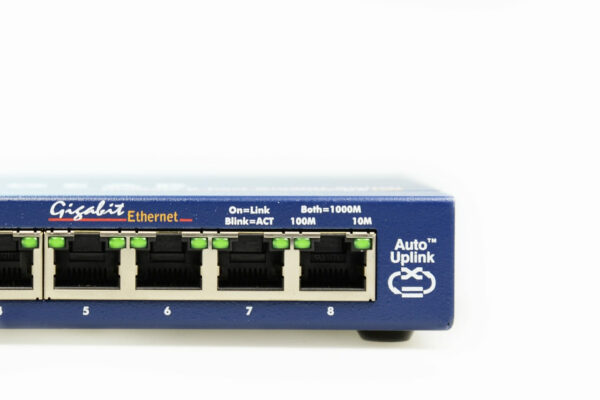In today’s rapidly evolving digital landscape, where seamless connectivity and high-speed data transfer are paramount, optimizing network performance is of utmost importance. One of the key components in achieving this optimization is the strategic usage of switches in networks. Switches play a vital role in directing data packets efficiently and ensuring a smooth flow of information within a network.
In this comprehensive guide, we will delve into the intricacies of switch usage in networks, exploring its benefits, best practices, and addressing common questions surrounding this crucial aspect of network architecture.
Switch Usage in Networks: Maximizing Connectivity

Switches, often referred to as network switches, are essential devices that facilitate the connection and communication between multiple devices within a local area network (LAN) or even larger networks. Unlike hubs, which transmit data to all devices within a network, switches intelligently route data packets only to their intended destinations. This process significantly reduces network congestion and improves overall data transfer speed.
Benefits of Effective Switch Usage
Optimizing the usage of switches in networks offers a myriad of benefits, such as:
- Enhanced Performance: By directing data traffic efficiently, switches minimize bottlenecks and latency issues, resulting in improved network performance and reduced data transmission delays.
- Segmentation: Switches allow network administrators to segment the network into virtual LANs, enhancing security and isolating sensitive data from unauthorized access.
- Bandwidth Allocation: With the ability to allocate dedicated bandwidth to specific devices, switches ensure that critical applications receive the necessary resources for optimal functionality.
- Collision Prevention: Unlike older technologies like Ethernet hubs, switches prevent data collisions, leading to more reliable and error-free data transmission.
- Scalability: Switches provide a scalable solution for network expansion. New devices can be seamlessly added without disrupting the overall network performance.
Best Practices for Effective Switch Usage
To harness the full potential of switches in networks, consider implementing these best practices:
1. Understand Network Requirements
Before deploying switches, comprehensively understand your network requirements. Determine the number of devices, data traffic volume, and types of applications that will run on the network.
2. Choose the Right Switch Type
Select switches that align with your network’s demands. Managed switches offer greater control and configuration options, while unmanaged switches are simpler to set up.
3. Implement VLANs
Utilize Virtual LANs (VLANs) to logically segment the network. This enhances security and optimizes data flow by isolating specific groups of devices.
4. Optimize Network Topology
Design an efficient network topology that minimizes data bottlenecks. Strategically place switches to ensure balanced data distribution.
5. Regular Maintenance
Perform routine maintenance tasks, such as firmware updates and monitoring network traffic. This ensures the switches operate optimally and remain secure.
6. Quality of Service (QoS) Configuration
Configure QoS settings to prioritize critical applications and ensure they receive sufficient bandwidth, maintaining optimal performance.
Switch Usage in Networks: FAQs
How do switches differ from routers?
Switches operate at the data link layer and are primarily responsible for forwarding data within a network. Routers, on the other hand, function at the network layer and facilitate data exchange between different networks.
Can I mix different switch brands within a network?
While it’s possible to mix switch brands, it’s recommended to maintain uniformity to simplify management and ensure compatibility. However, interoperability issues may arise in certain cases.
What is the significance of MAC addresses in switch operation?
MAC addresses are essential in switch operation as they help identify devices within a network. Switches use MAC addresses to determine the destination device when forwarding data packets.
How does switch failure affect a network?
In the event of a switch failure, the devices connected to that switch may lose connectivity. To mitigate this risk, redundant switches and network monitoring systems can be implemented.
Can switches enhance network security?
Yes, switches can enhance network security through features like VLANs. By isolating devices into separate VLANs, security breaches are contained, and unauthorized access is minimized.
Is it necessary to configure managed switches?
Managed switches provide greater control and configurability, making them ideal for larger networks. While configuration requires more expertise, it allows for optimization based on specific network needs.
Conclusion
In the realm of modern networking, the efficient usage of switches is pivotal in achieving high-performance, reliable, and secure connectivity. By strategically incorporating switches into your network architecture and following best practices, you can ensure that data flows seamlessly, applications perform optimally, and users experience minimal disruptions. Understanding the nuances of switch usage empowers network administrators to create robust and resilient networks that meet the demands of today’s interconnected world.